Crotonic acid
Modify Date: 2024-01-02 04:57:21
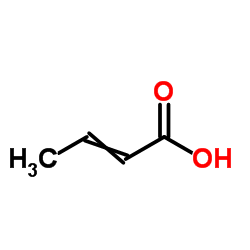
Crotonic acid structure
|
Common Name | Crotonic acid | ||
|---|---|---|---|---|
| CAS Number | 3724-65-0 | Molecular Weight | 86.089 | |
| Density | 1.0±0.1 g/cm3 | Boiling Point | 177.0±9.0 °C at 760 mmHg | |
| Molecular Formula | C4H6O2 | Melting Point | 70-72 °C(lit.) | |
| MSDS | N/A | Flash Point | 87.8±0.0 °C | |
| Name | 2-butenoic acid |
|---|---|
| Synonym | More Synonyms |
| Density | 1.0±0.1 g/cm3 |
|---|---|
| Boiling Point | 177.0±9.0 °C at 760 mmHg |
| Melting Point | 70-72 °C(lit.) |
| Molecular Formula | C4H6O2 |
| Molecular Weight | 86.089 |
| Flash Point | 87.8±0.0 °C |
| Exact Mass | 86.036781 |
| PSA | 37.30000 |
| LogP | 0.80 |
| Vapour density | 2.97 (vs air) |
| Vapour Pressure | 0.5±0.7 mmHg at 25°C |
| Index of Refraction | 1.449 |
| Water Solubility | soluble |
|
Section 1. Chemical Product and Company Identification Crotonic acid Common Name/ Trade Name Manufacturer Commercial Name(s) Synonym
Chemical Name Chemical Family Crotonic acid Section 4. First Aid Measures Eye ContactCheck for and remove any contact lenses. In case of contact, immediately flush eyes with plenty of water for at least 15 minutes. Cold water may be used. Get medical attention immediately. Skin ContactIn case of contact, immediately flush skin with plenty of water for at least 15 minutes while removing contaminated clothing and shoes. Cover the irritated skin with an emollient. Cold water may be used.Wash clothing before reuse. Thoroughly clean shoes before reuse. Get medical attention immediately. Serious Skin ContactWash with a disinfectant soap and cover the contaminated skin with an anti-bacterial cream. Seek immediate medical attention. InhalationIf inhaled, remove to fresh air. If not breathing, give artificial respiration. If breathing is difficult, give oxygen. Get medical attention. Serious InhalationEvacuate the victim to a safe area as soon as possible. Loosen tight clothing such as a collar, tie, belt or waistband. If breathing is difficult, administer oxygen. If the victim is not breathing, perform mouth-to-mouth resuscitation. WARNING: It may be hazardous to the person providing aid to give mouth-to-mouth resuscitation when the inhaled material is toxic, infectious or corrosive. Seek immediate medical attention. IngestionDo NOT induce vomiting unless directed to do so by medical personnel. Never give anything by mouth to an unconscious person. If large quantities of this material are swallowed, call a physician immediately. Loosen tight clothing such as a collar, tie, belt or waistband. Serious IngestionNot available. Section 5. Fire and Explosion Data Flammability of the Product Combustible. Auto-Ignition Temperature 396°C (744.8°F) OPEN CUP: 88°C (190.4°F). Flash Points Not available. Flammable Limits These products are carbon oxides (CO, CO2). Products of Combustion Fire Hazards in Presence of Flammable in presence of open flames and sparks, of heat. Various Substances Risks of explosion of the product in presence of mechanical impact: Not available. Explosion Hazards in Risks of explosion of the product in presence of static discharge: Not available. Presence of Various Substances Fire Fighting MediaSMALL FIRE: Use DRY chemical powder. and InstructionsLARGE FIRE: Use water spray, fog or foam. Do not use water jet. When heated to decomposition it emits acrid smoke and irritating fumes, carbon dioxide, carbon monoxide. Special Remarks on Fire Hazards Special Remarks on Explosion Not available. Hazards Section 6. Accidental Release Measures Small SpillDilute with water and mop up, or absorb with an inert dry material and place in an appropriate waste disposal container. Large SpillCombustible material. Corrosive liquid. Keep away from heat. Keep away from sources of ignition. Stop leak if without risk. Absorb with DRY earth, sand or other non-combustible material. Do not get water inside container. Do not touch spilled material. Use water spray curtain to divert vapor drift. Prevent entry into sewers, basements or confined Crotonic acid Section 7. Handling and Storage PrecautionsKeep container dry. Keep away from heat. Keep away from sources of ignition. Ground all equipment containing material. Do not ingest. Do not breathe gas/fumes/ vapor/spray. Never add water to this product. In case of insufficient ventilation, wear suitable respiratory equipment. If ingested, seek medical advice immediately and show the container or the label. Avoid contact with skin and eyes. Keep away from incompatibles such as oxidizing agents. StorageKeep container in a cool, well-ventilated area. Keep container tightly closed and sealed until ready for use. Avoid all possible sources of ignition (spark or flame). Section 8. Exposure Controls/Personal Protection Engineering ControlsProvide exhaust ventilation or other engineering controls to keep the airborne concentrations of vapors below their respective threshold limit value. Ensure that eyewash stations and safety showers are proximal to the work-station location. Personal ProtectionFace shield. Full suit. Vapor respirator. Be sure to use an approved/certified respirator or equivalent. Gloves. Boots. Respiratory protection is not necessary for normal handling. Good room ventilation or use of local exhaust (fume hood) is sufficient. Use a vapor respirator under conditions where exposure to the substance is apparent (e.g. generation of high concentrations of mist or vapor or dust, inadequate ventilation, development of respiratory tract irritation), and engineering controls are not feasible. Be sure to use an approved/certified respirator or equivalent. Personal Protection in Case of Splash goggles. Full suit. Vapor respirator. Boots. Gloves. A self contained breathing apparatus should a Large Spillbe used to avoid inhalation of the product. Suggested protective clothing might not be sufficient; consult a specialist BEFORE handling this product. Exposure LimitsNot available. Section 9. Physical and Chemical Properties Physical state and appearance Liquid.Not available. Odor TasteNot available. Molecular Weight86.09 g/mole ColorNot available. pH (1% soln/water)Not available. 185°C (365°F) Boiling Point Melting Point72°C (161.6°F) Critical TemperatureNot available. Specific Gravity0.9604 - 1.03 (Water = 1) Vapor Pressure0 kPa (@ 20°C) 2.97 (Air = 1) Vapor Density VolatilityNot available. Not available. Odor Threshold Water/Oil Dist. Coeff.Not available. Ionicity (in Water)Not available. Dispersion PropertiesSee solubility in water, diethyl ether, acetone. SolubilityEasily soluble in hot water. Soluble in cold water, diethyl ether, acetone. SOLUBLE IN HOT PETROLEUM ETHER IN ETHANOL @ 25 DEG C: 52.5% WT/WT; ACETONE @ 25 DEG C: 53.0% W/W; IN TOLUENE @ 25 DEG C: 37.5% WT/WT Water solubility: 8.6X10+4 mg/l at 25 deg C 555 g/l in water at 20 deg C Crotonic acid Section 10. Stability and Reactivity Data The product is stable. Stability Instability TemperatureNot available. Heat, ignition sources, incompatible materials Conditions of Instability Incompatibility with various Reactive with oxidizing agents. substances Non-corrosive in presence of glass. Corrosivity Special Remarks onNot available. Reactivity Special Remarks onNot available. Corrosivity Will not occur. Polymerization Section 11. Toxicological Information Routes of EntryInhalation. Ingestion. Toxicity to AnimalsAcute oral toxicity (LD50): 1000 mg/kg [Rat]. Acute dermal toxicity (LD50): 200 mg/kg [Guinea pig]. Chronic Effects on Humans May cause damage to the following organs: lungs. Other Toxic Effects onVery hazardous in case of skin contact (irritant), of ingestion. HumansHazardous in case of skin contact (corrosive), of eye contact (corrosive), of inhalation. Special Remarks onNot available. Toxicity to Animals Special Remarks onNot available. Chronic Effects on Humans Special Remarks on otherAcute Potential Health Effects: Toxic Effects on HumansSkin: Corrosive. Causes severe irritation and burns. Eyes: Corrosive. Causes severe irritation and burns. Inhalation: Breathing in Crotonic Acid can irritate the nose and throat causing coughing and wheezing. It may cause burns to the respiratory tract. Ingestion: May be harmful if swallowed. Can cause digestive tract/gastrointestinal tract burns. Chronic Potential Health Effects: Inhalation: It can irritate the lungs. Repeated exposure may cause bronchitis to develop with cough, phlegm, and/or shortness of breath. Section 12. Ecological Information Not available. Ecotoxicity BOD5 and CODNot available. Products of BiodegradationPossibly hazardous short term degradation products are not likely. However, long term degradation products may arise. Toxicity of the ProductsThe products of degradation are less toxic than the product itself. of Biodegradation Special Remarks on theNot available. Products of Biodegradation Crotonic acid Section 13. Disposal Considerations Waste DisposalWaste must be disposed of in accordance with federal, state and local environmental control regulations. Section 14. Transport Information DOT ClassificationClass 8: Corrosive material UNNA: 2823 : Crotonic Acid, solid PG: III Identification Not available. Special Provisions for Transport DOT (Pictograms) Section 15. Other Regulatory Information and Pictograms Pennsylvania RTK: Crotonic acid Federal and State Massachusetts RTK: Crotonic acid Regulations New Jersey: Crotonic acid TSCA 8(b) inventory: Crotonic acid CaliforniaCalifornia prop. 65: This product contains the following ingredients for which the State of California has Proposition 65found to cause cancer which would require a warning under the statute: No products were found. Warnings California prop. 65: This product contains the following ingredients for which the State of California has found to cause birth defects which would require a warning under the statute: No products were found. Other RegulationsOSHA: Hazardous by definition of Hazard Communication Standard (29 CFR 1910.1200). EINECS: This product is on the European Inventory of Existing Commercial Chemical Substances (EINECS No. 223-077-4). Canada: Listed on Canadian Domestic Substance List (DSL). China: Listed on National Inventory. Japan: Listed on National Inventory (ENCS). Korea: Listed on National Inventory (KECI). Philippines: Listed on National Inventory (PICCS). Australia: Listed on AICS. WHMIS (Canada) CLASS E: Corrosive liquid. Other Classifications DSCL (EEC)R34- Causes burns.S26- In case of contact with eyes, rinse immediately with plenty of water and seek medical advice. S36/37/39- Wear suitable protective clothing, gloves and eye/face protection. S45- In case of accident or if you feel unwell, seek medical advice immediately (show the label where possible). Health Hazard HMIS (U.S.A.)3 National Fire Protection 2 Flammability 2 Association (U.S.A.) Fire Hazard 3 0 Reactivity Health Reactivity 0 Specific hazard Personal Protection WHMIS (Canada) (Pictograms) Crotonic acid DSCL (Europe) (Pictograms) TDG (Canada) (Pictograms) ADR (Europe) (Pictograms) Protective Equipment Gloves. Full suit. Vapor respirator. Be sure to use an approved/certified respirator or equivalent. Wear appropriate respirator when ventilation is inadequate. SECTION 16 - ADDITIONAL INFORMATION N/A |
CHEMICAL IDENTIFICATION
HEALTH HAZARD DATAACUTE TOXICITY DATA
|
| Hazard Codes | C:Corrosive; |
|---|---|
| Risk Phrases | R21/22;R34 |
| Safety Phrases | S26-S36/37/39-S45 |
| RIDADR | UN 2823 8/PG 3 |
| WGK Germany | 3 |
| RTECS | GQ2900000 |
| Packaging Group | III |
| HS Code | 2916190090 |
| Precursor 10 | |
|---|---|
| DownStream 10 | |
| HS Code | 2916190090 |
|---|---|
| Summary | 2916190090 unsaturated acyclic monocarboxylic acids, their anhydrides, halides, peroxides, peroxyacids and their derivatives。supervision conditions:AB(certificate of inspection for goods inward,certificate of inspection for goods outward)。VAT:17.0%。tax rebate rate:9.0%。MFN tariff:6.5%。general tariff:30.0% |
| Crotonic acid |
| MFCD00002701 |
| But-2-enoic acid |
| EINECS 203-533-9 |
 CAS#:6117-91-5
CAS#:6117-91-5 CAS#:201230-82-2
CAS#:201230-82-2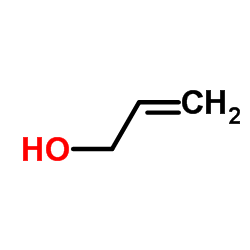 CAS#:107-18-6
CAS#:107-18-6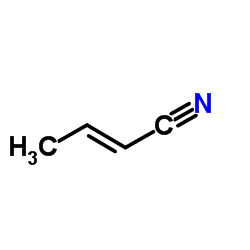 CAS#:4786-20-3
CAS#:4786-20-3 CAS#:600-30-6
CAS#:600-30-6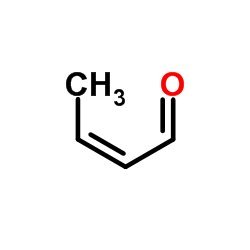 CAS#:123-73-9
CAS#:123-73-9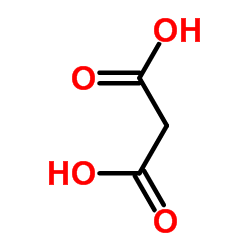 CAS#:141-82-2
CAS#:141-82-2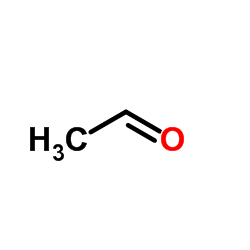 CAS#:75-07-0
CAS#:75-07-0 CAS#:10544-63-5
CAS#:10544-63-5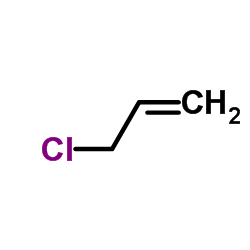 CAS#:107-05-1
CAS#:107-05-1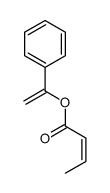 CAS#:109538-27-4
CAS#:109538-27-4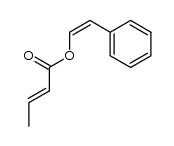 CAS#:109538-30-9
CAS#:109538-30-9 CAS#:109538-33-2
CAS#:109538-33-2 CAS#:187737-37-7
CAS#:187737-37-7 CAS#:592-77-8
CAS#:592-77-8 CAS#:124-38-9
CAS#:124-38-9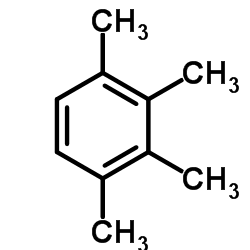 CAS#:488-23-3
CAS#:488-23-3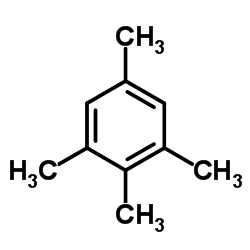 CAS#:527-53-7
CAS#:527-53-7 CAS#:934-74-7
CAS#:934-74-7
